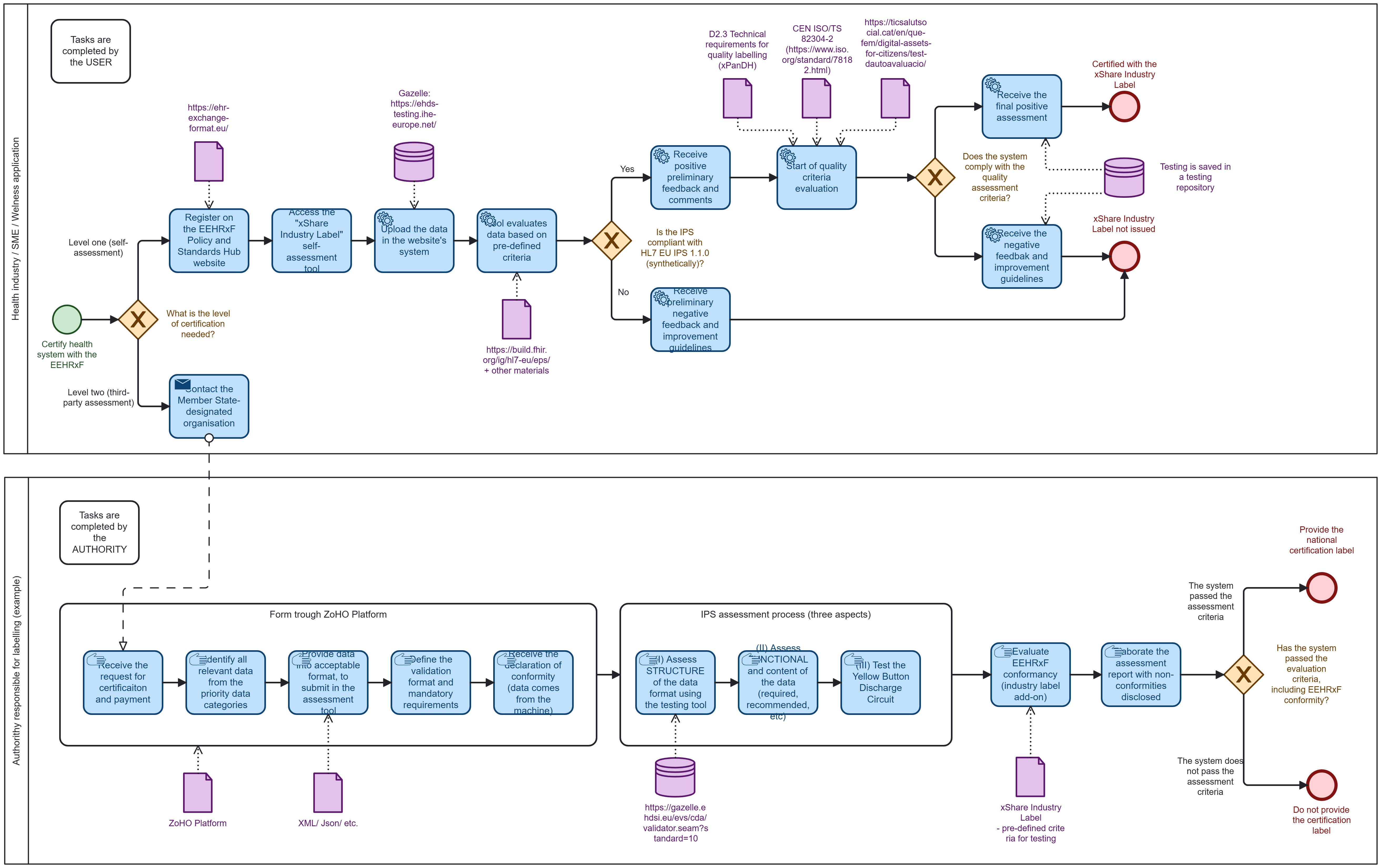xShare Project Yellow Button
0.2.0-ci-build - ci-build
150
xShare Project Yellow Button
0.2.0-ci-build - ci-build
150
xShare Project Yellow Button, published by xShare Project. This guide is not an authorized publication; it is the continuous build for version 0.2.0-ci-build built by the FHIR (HL7® FHIR® Standard) CI Build. This version is based on the current content of https://github.com/hl7-eu/xShare/ and changes regularly. See the Directory of published versions
Contents:
The xShare Industry Label is designed to be a flexible and adaptable certification system that can be tailored to the specific needs of different stakeholders. The label is divided into three levels, each with its own set of requirements and evaluation processes. This tiered approach allows for a gradual progression from self-assessment to more rigorous third-party evaluations, ensuring that organisations can choose the level of certification that best suits their needs.
| Label Level | Steps and actions | |
|---|---|---|
| 🥉 |
Bronze (Self-assessment by the entity) |
1. Provide a guidance document (handbook or similar) for self-declaration. 2. Users access the hub's website. 3. Fill in a conformance statement. 4. Receive the Bronze logo to display on their system/website. |
| 🥈 |
Silver (External technical evaluation incl. test trials) |
1. Develop a guidance document for external evaluation (IHE to oversee the process). 2. Make the Yellow Button available for download. 3. Create a test case within Gazelle to validate correct format. 4. Conduct test trials via an external evaluation body. 5. Issue the Silver logo using Gazelle. |
| 🥇 |
Gold (Gold standard - full process incl. implementation verification by regional authorities) |
1. Integrate into regional certification frameworks (e.g., Catalonia's Health Seal of Excellence). 2. Ensure the health app/software supports advanced interoperability (e.g., IPS exchange). 3. Submit a conformance statement. 4. Define sample submission requirements for compliance verification. 5. Regional entity (e.g., TIC Salut) verifies sample implementation using Gazelle and issues a formal report. 6. Manual expert validation (e.g., joint review meetings) complements automated checks. 7. Issue the Gold logo indicating full trust and operational integration. |
The process begins when an organisation needs to certify their health system with the EEHRxF. This step involves the initiation of a formal certification process aimed at ensuring that health systems or applications adhere to the standards and policies defined within the European Electronic Health Record Exchange Format (EEHRxF). At this stage, a decision arises, posing the question: "What is the level of certification needed?" The applicant must decide between two available paths based on the desired rigor of the certification: Level One (Self-assessment) or Level Two (Third-party assessment).
Disclaimer: The current process to attain the xShare Industry Label and demonstrate compliance with the EEHRxF is currently under development and this process is likely to go through alterations.

The self-assessment path is designed for organisations that prefer to evaluate their compliance with the EEHRxF standards independently. This path allows organisations to conduct a preliminary assessment of their systems and applications without the need for external validation.
Decision Point: "Is the uploaded data compliant with EEHRxF certification criteria?"
The third-party assessment path is designed for organisations that seek external validation of their compliance with the EEHRxF standards. This path involves a more rigorous evaluation process, including technical assessments and potential test trials.
Decision Point: "Has the system passed the evaluation criteria, including EEHRxF conformity?"